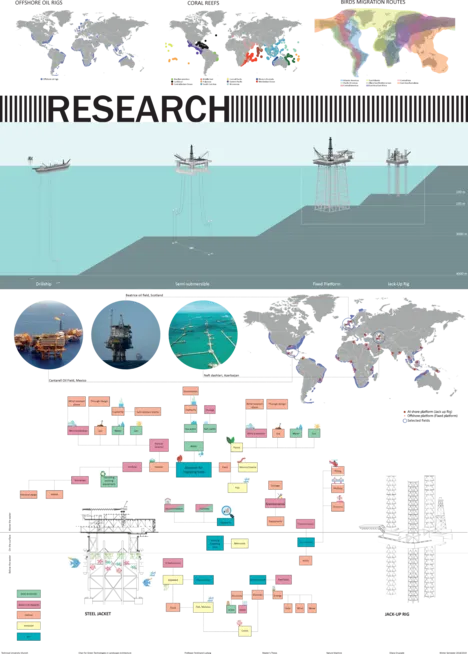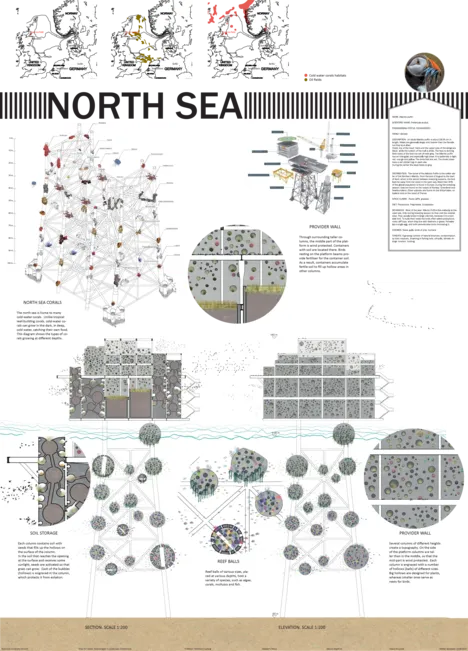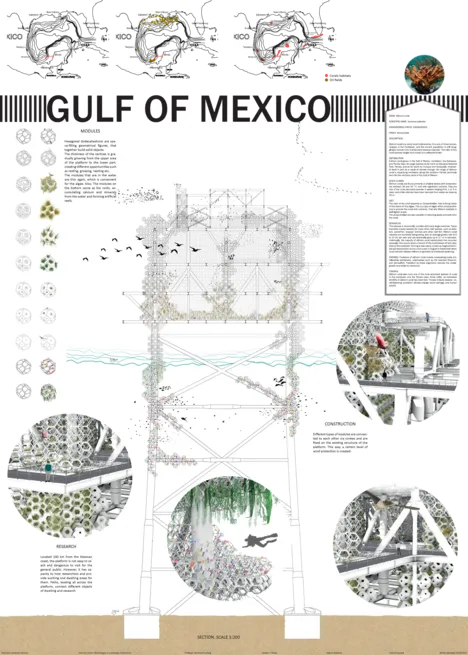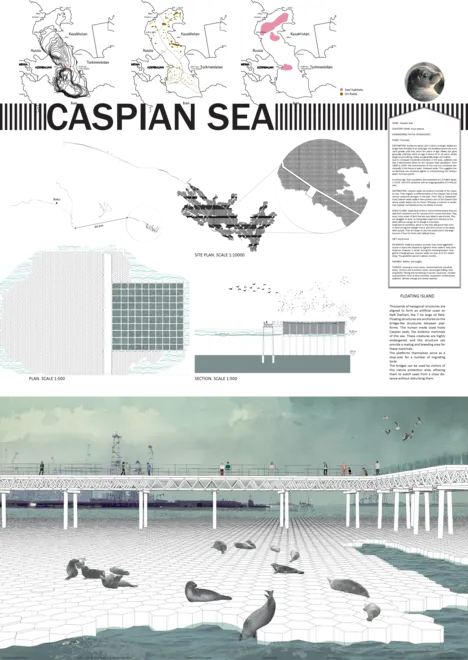Nature Machine
Masterarbeit von Dilara Orujzade
[Auszug]
INTRODUCTION
Oil rigs have become part of the landscape in many countries around the world. First offshore platforms were constructed at the end of the nineteenth century and since then their numbers have only kept growing. A mass construction of oil rigs started in the middle of the 20th century. Since the average life expectancy of a functioning rig is around 12 to 30 years, currently many rigs around the world are being abandoned in the sea. […] The laws about retired oil rigs vary from country to country, and from sea to sea. In some seas the rigs have to be decommissioned within a certain period of time, while in others they are sunk in the water or just abandoned. The process of decommissioning can be as expensive as constructing a platform. Since the platforms are usually quite hard to reach and not safe for untrained people to stay on, they are mainly not suitable for dwelling. Nevertheless, it has been shown that oil platforms are able to host some aquatic organisms and birds. The United States and Brunei are already working on the Rigs-to-reefs program, where former oil platforms are being left in the sea, either in the original site or towered to new locations, as permanent artificial reefs. According to the research of marine biologist Dr. Milton Love, oil rig structures do not disturb aquatic lives, but on the contrary, even function as artificial reefs that provide a home to a large variety of different species. Removing platforms using explosives results in the death of large numbers of fishes, although the lack of sufficient research makes it difficult to predict how many deaths occur. Marine mammals and sea turtles may also be indirectly killed by damage to their auditory system. […]
NORTH SEA
The north sea is home to many cold-water corals. Unlike tropical reef-building corals, cold-water corals can grow in the dark, in deep, cold water, catching their own food. This diagram shows the types of corals growing at different depths. […] Each column contains soil with seeds that fills up the hollows on the surface of the column. In the soil that reaches the opening at the surface and receives some sunlight, seeds are activated so that grass can grow. Each of the bubbles (hollows) is engraved in the column, which protects it from eolation. Reef balls of various sizes, placed at various depths, host a variety of species, such as algae, corals, molluscs and fish. Through surrounding taller columns, the middle part of the platform is wind protected. Containers with soil are located there. Birds resting on the platform beams provide fertiliser for the container soil. As a result, containers accumulate fertile soil to fill up hollow areas in other columns. Several columns of different heights create a topography. On the side of the platform columns are taller than in the middle, so that the mid-part is wind protected. Each column is engraved with a number of hollows (balls) of different sizes. Big hollows are designed for plants, whereas smaller ones serve as nests for birds. […]
GULF OF MEXICO
Hexagonal dodecahedrons are space-filling geometrical figures, that together build solid objects. The thickness of the vertices is gradually growing from the upper area of the platform to the lower part, creating different opportunities such as resting, growing, nesting etc. The modules that are in the water are thin again, which is convenient for the algae. Also, the modules on the bottom serve as bio rocks, accumulating calcium and Minerals from the water and forming artificial reefs. Located 100 km from the Mexican coast, the platform is not easy to reach and dangerous to visit for the general public. However, it has capacity to host researchers and provide working and dwelling areas for them. Paths, leading all across the platform, connect different objects of dwelling and research. Different types of modules are connected to each other via screws and are fixed on the existing structure of the platform. This way, a certain level of wind protection is created. […]



